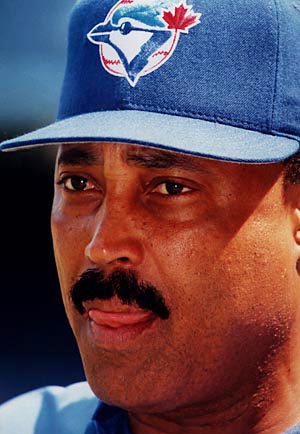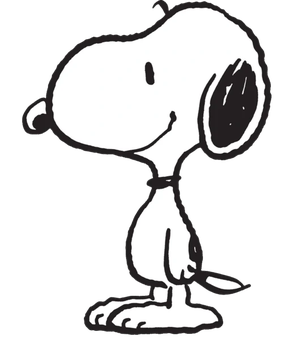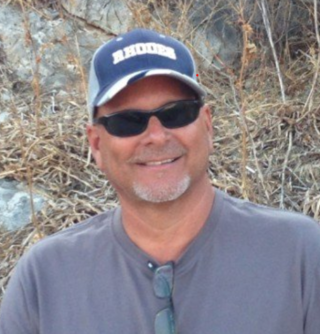
The Montreal Expos were a Canadian professional baseball team based in Montreal. The Expos were the first Major League Baseball (MLB) franchise located outside the United States. They played in the National League (NL) East division from 1969 until 2004. Following the 2004 season, the franchise relocated to Washington, D.C., and became the Washington Nationals.

The Toronto Blue Jays are a Canadian professional baseball team based in Toronto. The Blue Jays compete in Major League Baseball (MLB) as a member club of the American League (AL) East Division. Since 1989, the team has played its home games primarily at Rogers Centre in downtown Toronto.

A mascot is any human, animal, or object thought to bring luck, or anything used to represent a group with a common public identity, such as a school, sports team, society, military unit, or brand name. Mascots are also used as fictional, representative spokespeople for consumer products.

Joseph Chris Carter is an American former professional baseball player. He played in Major League Baseball (MLB) as an outfielder and first baseman for the Chicago Cubs, Cleveland Indians, San Diego Padres, Toronto Blue Jays, Baltimore Orioles, and San Francisco Giants. Carter hit a walk-off home run to win the 1993 World Series for the Blue Jays, their second consecutive championship. Carter is one of only two players to end a World Series with a home run, the other being Bill Mazeroski.

John Paul Ricciardi is an American Major League Baseball executive currently serving as a special advisor to the president of baseball operations with the San Francisco Giants. He previously served as the general manager of the Toronto Blue Jays from 2001 to 2009.
CJCL is a Canadian sports radio station in Toronto, Ontario. Owned and operated by Rogers Radio, a division of Rogers Sports & Media since 2002, CJCL's studios are located at the Rogers Building at Bloor and Jarvis in downtown Toronto, while its transmitters are located near Grimsby atop the Niagara Escarpment. It is the flagship station for the Toronto Blue Jays, and also airs games from the Toronto Raptors, Toronto Maple Leafs, Buffalo Bisons and Buffalo Bills. CJCL is a CBS Sports Radio affiliate.

The Kinston Indians were a Minor League Baseball team of the Carolina League (CL) located in Kinston, North Carolina, from 1978 to 2011. They played their home games at Grainger Stadium, which opened in 1949.

Andrew Rozdilsky Jr. was an American clown. As Andy the Clown, he was well-known for performing at Chicago White Sox games at the original Comiskey Park from 1960 to 1990.

Clarence Edwin "Cito" Gaston is an American former Major League Baseball outfielder, coach and manager. His major league career as a player lasted from 1967 to 1978, most notably with the San Diego Padres and Atlanta Braves. He spent his entire managerial career with the Toronto Blue Jays, becoming the first African-American manager in Major League Baseball history to win a World Series title.

James Gilbert McKean was a Canadian umpire in Major League Baseball (MLB) who worked in the American League (AL) from 1974 to 1999, and in both major leagues in 2000 and 2001. He umpired in the World Series in 1979, 1985 and 1995. He also officiated in five American League Championship Series and three All-Star games, calling balls and strikes for the last game, as well as the 1981, 1995 and 1999 American League Division Series. He wore uniform number 8 after the AL adopted uniform numbers in 1980.

The city of Toronto, Ontario, Canada, has a long history of sport. It is home to a number of clubs, including the Granite Club, the Royal Canadian Yacht Club, the Toronto Cricket, Skating and Curling Club, the Argonaut Rowing Club, Toronto Argonauts football club, the Toronto Lawn Tennis Club, and the Badminton and Racquet Club. A number of heritage venues have developed in Toronto such as: Christie Pits, Coca-Cola Coliseum, Varsity Arena, and Maple Leaf Gardens. Toronto is also the location of the Canadian Football League's headquarters.
The 1999 Toronto Blue Jays season was the franchise's 23rd season of Major League Baseball. It resulted in the Blue Jays finishing third in the American League East with a record of 84 wins and 78 losses. The team set a franchise record for most runs scored in a season (883) and hits in a season (1,580). The previous Blue Jays records for most runs scored and most hits in a season were set in 1993 when the Jays scored 847 runs and collected 1,556 hits. Conversely, the Blue Jays pitching staff gave up the most runs of any Blue Jays team since 1979. It was the team's final season with original mascot BJ Birdy.

Snoopy is an anthropomorphic beagle in the comic strip Peanuts by Charles M. Schulz. He can also be found in all of the Peanuts films and television specials. Since his debut on October 4, 1950, Snoopy has become one of the most recognizable and iconic characters in the comic strip and is considered more famous than Charlie Brown in some countries. The original drawings of Snoopy were inspired by Spike, one of Schulz's childhood dogs.

The Toronto Blue Jays came into existence in 1976, as one of two teams slated to join the American League for the following season, via the 1977 Major League Baseball expansion.
The Naismith Cup was an annual pre-season National Basketball Association (NBA) exhibition game. From the 1995 season through 2000, it was played between the two Canadian NBA rivals, the Toronto Raptors and the Vancouver Grizzlies, at neutral venues across Canada. The cup was named after James Naismith, the Canadian inventor of basketball, and was originally created to raise money for Canada Basketball, similar to the Pearson Cup competition between Canada's Major League Baseball teams the Toronto Blue Jays and Montreal Expos. Following the Grizzlies relocation to Memphis the cup was laid dead, though the Raptors continued the tradition of hosting neutral site pre-season games in Canadian cities under the NBA Canada Series name. The Raptors won the series against Vancouver 4–1.
Michael Samuel Wilner is a Canadian former baseball broadcaster for the Toronto Blue Jays. From 2014 through 2020, he called play-by-play for the Blue Jays' radio broadcasts, and authored a blog on Sportsnet.ca/590. He formerly hosted a postgame radio call-in show called BlueJaysTalk on the Fan 590. He graduated from the University of Toronto in 1994. As of February 11, 2021, Wilner has been a baseball columnist for the Toronto Star.

Marty York is a Canadian former sports journalist with The Globe and Mail, TSN, Sportsnet, and Metro newspapers across Canada. He is currently the Director of Communications for B'nai Brith Canada.














